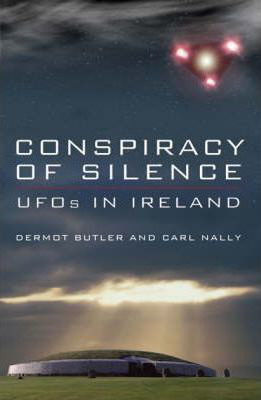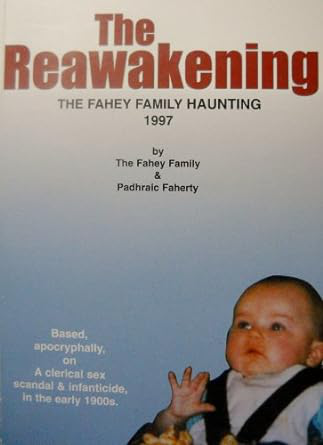The Theory of Everything, Can It Be Proven or Is Progress Being Held Back?
Science/Medical/Technology
Thursday 30th, May 2024
4 minute read.
Ever since the inception of quantum mechanics, which governs the microworld of atoms and particles, physicists have been on a relentless quest to find a theory of everything. This grand theory would unify quantum mechanics with Einstein’s theory of general relativity, which explains the universe on large scales.
However, despite nearly a century of effort, a tried and tested theory of everything remains elusive. A significant part of the problem may be a pervasive fear of failure within the scientific community.
Creating a theory of everything is no simple task. It involves developing a single framework that unites the fundamental forces of the universe, while accounting for all underlying constants and every subatomic particle. The reward for solving this ultimate question is nothing less than eternal glory in the annals of human achievement.
Einstein’s generation was intensely driven to solve this puzzle. In fact, Einstein worked on a theory of everything until his dying days, though he was ultimately ridiculed for his efforts. Despite his monumental contributions to physics, Einstein’s final quest is often viewed as a failure. Other notable physicists of the time, such as Arthur Eddington, Hermann Weyl, and mathematician David Hilbert, faced even harsher consequences.
Take Arthur Eddington, for example, perhaps the greatest scientist you have never heard of. The Cambridge astronomer and physicist proved Einstein correct by analysing a 1919 eclipse, propelling Einstein to global fame. Eddington also authored the first English books on relativity and wrote extensively on Georges Lemaître’s Big Bang theory.
In addition to his work on relativity, Eddington made significant contributions to quantum physics and was the leading popular science writer of the 1920s and 1930s. However, his intense pursuit of a fundamental theory ultimately overshadowed his achievements. His final attempt, published posthumously, was dismissed as numerology and mocked by his peers for its perceived lack of scientific rigor. This failure severely damaged his legacy.
Eddington’s fate served as a powerful warning about the price of failure. The final decade of his life, spent in pursuit of a theory of everything, ended in severe damage to his reputation. As a result, the generation of physicists following Einstein and Eddington, including Richard Feynman, largely lost interest in the quest for a unifying theory. Instead, they focused on new subatomic discoveries and applications of physics to chemistry and biology, leading to several Nobel prizes. The ridicule endured by those who had tried and failed before them likely played a significant role in this shift.
The high cost of failure rose alongside the unparalleled successes of interwar physics, creating an environment where failure was increasingly unforgiving. This was hardly an incentive for young, brilliant minds to tackle the largest questions in physics.
Even today, attempts at theories of everything are often met with scepticism and mockery. String theory, a leading candidate for a theory of everything, has been criticised by Nobel laureate Roger Penrose as not being real science. Stephen Hawking supported a version of string theory called M-theory, but even he acknowledged its struggles to produce testable predictions.
A young scientist today might wonder, if Einstein, Eddington, and Hawking could not solve the problem, then who will? Many are doubtful that it can be achieved, and some question whether it is even necessary, given that practical advancements in physics continue without it.
As a result, many physicists now avoid the term “theory of everything”, opting instead for less grandiose alternatives such as “quantum gravity”. The high price of failure, coupled with the potential career dead ends, makes the pursuit of a theory of everything a daunting prospect for young researchers. Securing funding for such high risk research is another significant hurdle.
It is likely that solving a theory of everything will require massive collaboration. Ironically, this may be a task for older physicists who have already secured their reputations and can afford the potential embarrassment. For instance, Francis Crick dedicated his later years to the problem of consciousness, albeit without success.
Collaboration is essential, but the prospect of a theory of everything may ultimately rely on those who have achieved so much that they can risk failure without significant personal cost. This scenario does little to inspire the enthusiasm of young, vibrant minds who might otherwise tackle the problem.
In striving to solve the ultimate problem, we may have inadvertently created a monster. Our academic and funding frameworks are not conducive to such high risk or fringe research, and history has presented an unkind picture of those who try and fail.
Yet, our greatest progress has always come from those willing to take risks. To encourage new breakthroughs, we must create an environment that supports and values long term, speculative research. After all, the most significant advancements often come from those who dare to tackle the boldest challenges.
However, despite nearly a century of effort, a tried and tested theory of everything remains elusive. A significant part of the problem may be a pervasive fear of failure within the scientific community.
Creating a theory of everything is no simple task. It involves developing a single framework that unites the fundamental forces of the universe, while accounting for all underlying constants and every subatomic particle. The reward for solving this ultimate question is nothing less than eternal glory in the annals of human achievement.
Einstein’s generation was intensely driven to solve this puzzle. In fact, Einstein worked on a theory of everything until his dying days, though he was ultimately ridiculed for his efforts. Despite his monumental contributions to physics, Einstein’s final quest is often viewed as a failure. Other notable physicists of the time, such as Arthur Eddington, Hermann Weyl, and mathematician David Hilbert, faced even harsher consequences.
Take Arthur Eddington, for example, perhaps the greatest scientist you have never heard of. The Cambridge astronomer and physicist proved Einstein correct by analysing a 1919 eclipse, propelling Einstein to global fame. Eddington also authored the first English books on relativity and wrote extensively on Georges Lemaître’s Big Bang theory.
In addition to his work on relativity, Eddington made significant contributions to quantum physics and was the leading popular science writer of the 1920s and 1930s. However, his intense pursuit of a fundamental theory ultimately overshadowed his achievements. His final attempt, published posthumously, was dismissed as numerology and mocked by his peers for its perceived lack of scientific rigor. This failure severely damaged his legacy.
Eddington’s fate served as a powerful warning about the price of failure. The final decade of his life, spent in pursuit of a theory of everything, ended in severe damage to his reputation. As a result, the generation of physicists following Einstein and Eddington, including Richard Feynman, largely lost interest in the quest for a unifying theory. Instead, they focused on new subatomic discoveries and applications of physics to chemistry and biology, leading to several Nobel prizes. The ridicule endured by those who had tried and failed before them likely played a significant role in this shift.
The high cost of failure rose alongside the unparalleled successes of interwar physics, creating an environment where failure was increasingly unforgiving. This was hardly an incentive for young, brilliant minds to tackle the largest questions in physics.
Even today, attempts at theories of everything are often met with scepticism and mockery. String theory, a leading candidate for a theory of everything, has been criticised by Nobel laureate Roger Penrose as not being real science. Stephen Hawking supported a version of string theory called M-theory, but even he acknowledged its struggles to produce testable predictions.
A young scientist today might wonder, if Einstein, Eddington, and Hawking could not solve the problem, then who will? Many are doubtful that it can be achieved, and some question whether it is even necessary, given that practical advancements in physics continue without it.
As a result, many physicists now avoid the term “theory of everything”, opting instead for less grandiose alternatives such as “quantum gravity”. The high price of failure, coupled with the potential career dead ends, makes the pursuit of a theory of everything a daunting prospect for young researchers. Securing funding for such high risk research is another significant hurdle.
It is likely that solving a theory of everything will require massive collaboration. Ironically, this may be a task for older physicists who have already secured their reputations and can afford the potential embarrassment. For instance, Francis Crick dedicated his later years to the problem of consciousness, albeit without success.
Collaboration is essential, but the prospect of a theory of everything may ultimately rely on those who have achieved so much that they can risk failure without significant personal cost. This scenario does little to inspire the enthusiasm of young, vibrant minds who might otherwise tackle the problem.
In striving to solve the ultimate problem, we may have inadvertently created a monster. Our academic and funding frameworks are not conducive to such high risk or fringe research, and history has presented an unkind picture of those who try and fail.
Yet, our greatest progress has always come from those willing to take risks. To encourage new breakthroughs, we must create an environment that supports and values long term, speculative research. After all, the most significant advancements often come from those who dare to tackle the boldest challenges.



